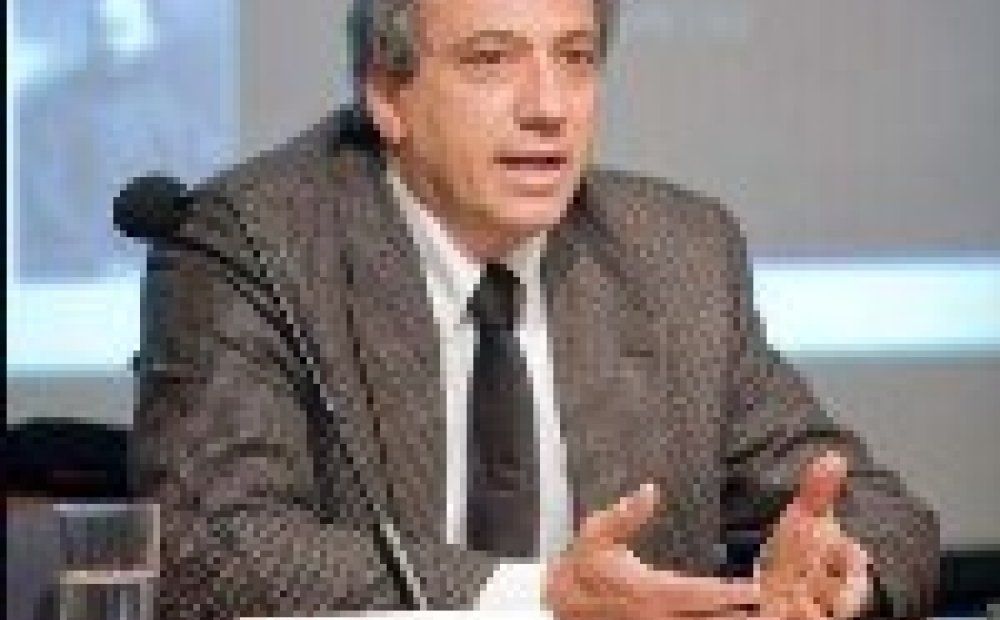Jewish Philanthropy, Education, and Nationalism in Late Tsarist Russia: The Society for the Promotion of Enlightenment among the Jews of Russia

In his latest book, Jewish Philanthropy and Enlightenment in Late-Tsarist Russia, Brian Horowitz, Sizeler Family Chair of Jewish Studies and Director of the German and Slavic Studies Department, Tulane University, investigates the oldest Jewish organization in Russia, the Society for the Promotion of Enlightenment among the Jews of Russia (OPE). At a recent Kennan Institute lecture, Horowitz discussed his findings and explained how his study of the OPE allowed for a reexamination of both the Jewish experience in late-Tsarist Russia and how historians conceive of it today.
The OPE was a secular, nonprofit, philanthropic organization, founded by a handful of wealthy Jews in St. Petersburg who wanted to improve opportunities for Jews in Russia by increasing their access to education and "modern values," Horowitz explained. The group believed that modern education for Jews was crucial to the unity of Jewish culture and to the successful integration of Jews into Russian society. As such, their chief activities consisted of opening, supporting, and subsidizing schools for Jews throughout the country.
While reaching out to Jews across Russia, the OPE encountered opposition on all fronts. From one side, it was hindered by the bureaucracy—and sometimes outright hostility—of the Russian government, which imposed strict regulations on all aspects of Jewish life, Horowitz said. From another side, it was limited by the many disparate voices within the Jewish community itself. Horowitz described the constant debates that existed over the best type of schools – secular or religious, co-educational or single sex, traditional or "modern." Even the choice of language for the schools was hotly debated.
According to Horowitz, his study of the OPE revealed two significant aspects about how Jewish life in late-Tsarist Russia should be understood. First, Horowitz challenged the notion widely accepted among historians that a change in leadership occurred in the Jewish community in Russia when the Shtadlonim, or "Intercessors"—the very rich Jews of the 1860s, such as Evzel and Horace Gintsburg, A. M. Brodsky, and Samuel Poliakov—ceded their position to the Jewish activists and professionals (lawyers, doctors, journalists, etc.) in the late 1880s to 1890s. Horowitz put forth that such figures never actually fully relinquished their power, but rather joined together with the activists to promote enlightenment. Second, Horowitz argued that although Jews who remained in Tsarist Russia in fact wanted to integrate into Russian society, circumstances made it impossible. Thus, they chose a national path without necessarily wanting to, he claimed.
The book, Horowitz noted, reiterates what has been the main idea in Jewish scholarship for the last 20 years, which is that there is more to the story of Jews in Russia than persecution and emigration and that there were Jews who wanted to stay in Russia and make a life for themselves there. Horowitz believes, however, that his study goes further than others because it examines what happened after the process of integration on an individual level ended in 1887, showing how Jews involved in the process saw themselves as part of groups and created institutions like the OPE as part of a national project.
In St. Petersburg, the vision of the OPE was eventually realized, at least in part, according to Horowitz. St. Petersburg, he explained, was seen as a model for integration through education that could be exported to the provinces. Jews in the provinces, however, did not consider themselves as being behind. In fact, Horowitz pointed out that by 1905, it was quite common to find Jews in the provinces who spoke fluent Russian but no Hebrew. Many had either fully integrated or become Zionists or Bundists, secular Jewish socialists, leaving the liberal vision behind and making the OPE obsolete. What was left of the OPE—many of its members having either immigrated to Western Europe or died—was liquidated in 1929. "The liberal vision never gained the traction that the St. Petersburg elite had hoped it would," Horowitz concluded, "but it did provide a kind of model for a synthesis of Jewish and Russian life that was productive on a personal and professional level." In this way, his book offers a useful examination of individuals and institutions struggling with the concern still central to contemporary Jews around the world today: how to retain a strong Jewish identity while fully integrating into modern society.
Written by Sarah Dixon Klump
Hosted By

Kennan Institute
After more than 50 years as a vital part of the Wilson Center legacy, the Kennan Institute has become an independent think tank. You can find the current website for the Kennan Institute at kennaninstitute.org. Please look for future announcements about partnership activities between the Wilson Center and the Kennan Institute at Wilson Center Press Room. The Kennan Institute is the premier US center for advanced research on Eurasia and the oldest and largest regional program at the Woodrow Wilson International Center for Scholars. The Kennan Institute is committed to improving American understanding of Russia, Ukraine, Central Asia, the South Caucasus, and the surrounding region through research and exchange. Read more
